The World’s Leading Supplier of AAC Production Line
English
- All
- Product Name
- Product Keyword
- Product Model
- Product Summary
- Product Description
- Multi Field Search
The World’s Leading Supplier of AAC Production Line
The World’s Leading Supplier of AAC Production Line
Views: 0 Author: Site Editor Publish Time: 2025-07-16 Origin: Site








An aac block plant makes light building materials called aac blocks. The main job of an aac block plant is to mix raw materials to make aac. AAC means autoclaved aerated concrete. This process makes building blocks that save energy and last a long time. More people want aac because it is good for the environment and helps build things faster.
The world aac market was worth USD 20.08 billion in 2024. It is expected to grow by 5.7% each year. The top areas are North America, Europe, and Asia.
Metric | Value |
|---|---|
Market Size (2024) | USD 20.08 billion |
Projected Market Size (2033) | USD 31.28 billion |
Compound Annual Growth Rate | 5.7% (2025 to 2033) |
An aac block plant is important because it helps cities grow. It gives builders the materials they need for new buildings.
AAC block plants make strong, light building blocks called autoclaved aerated concrete (AAC). These blocks save energy and last a long time. AAC blocks are lighter than clay bricks. They also resist fire better. This makes buildings safer and easier to build. The process starts by mixing raw materials. Then, the mix is put into molds. Next, the blocks are cut. After that, they are cured with steam pressure. This makes sure the blocks are strong and good quality. Modern AAC plants use machines to mix, cut, and pack the blocks. This helps them work faster and keeps the blocks the same every time. Picking the best AAC plant supplier depends on their experience and technology. Support and cost also matter. This helps make sure the plant works well and makes good blocks. AAC blocks help builders finish faster. They also lower energy bills. They are good for the environment because they use eco-friendly materials and save resources. The AAC market is growing quickly around the world. More people want building materials that save energy, are safe from fire, and are light. Taking care of AAC plants and using energy wisely keeps machines working well. It also helps make better blocks over time.
It's a lightweight type of concrete Autoclaved aerated concrete, or AAC. To produce AAC, workers mix sand, cement, lime, water and a small amount of aluminum powder. This combination forms loads of tiny air bubbles. These bubbles make AAC light and allow it to hold heat in or out. The process of the AAC uses steam and pressure in a special machine that is an autoclave. As a result, finished products are as strong and even as possible. The products are blocks, panels and lintels at AAC. Builders rely on AAC for a wide variety of building components – support and otherwise.
AAC blocks are one of the widely used types of autoclaved aerated make. They’re a lot lighter than normal clay bricks. This is what makes them convenient and easier to move and use. Asbestos Cement Asbestos cement/ac sheet is the most popular form of roofing which is used in building and industrial sector. Some are for interior walls and some for exterior walls. The method of manufacture results in blocks with the same strength and composition. The aac blocks retain the heat in or out, as the case may be, very well. And they’re hard to burn — so they’re great for safe buildings.
Table: Comparison of AAC Blocks and Clay Bricks
Property | AAC Blocks | Clay Bricks |
|---|---|---|
Thermal Conductivity | 0.24 W/m.k | 0.81 W/m.k |
Fire Resistance | 4 to 6 hours (varies by thickness) | About 2 hours |
AAC blocks keep heat in or out better than clay bricks. They also last longer in fire, which makes buildings safer. Builders can use AAC blocks for walls that hold weight or for walls that do not. Because AAC blocks are light, buildings weigh less. This can make building faster and cost less money.
AAC blocks have many good points compared to old building materials. Workers can build faster with AAC blocks. The blocks are bigger and lighter, so they are easy to carry and put in place. This helps finish buildings sooner. There are fewer joints between blocks, so walls go up quickly.
AAC blocks are good for the environment. The way AAC is made uses steam, not high heat, so it saves energy and makes less pollution. Many AAC blocks use fly ash, which is waste from power plants, instead of using clay or soil. This helps save natural resources and is better for nature. Because AAC blocks are light, it costs less to move them.
AAC blocks keep buildings cool in summer and warm in winter. This can save up to 25% on air conditioning over time. Waste from AAC blocks can be used again, and the blocks last a long time. Builders know AAC is a smart choice for new buildings. AAC products, like ready-made panels, help save energy and protect resources.
Tip: AAC blocks work well for homes and business buildings. They last a long time and help save energy, so they are a good pick for green building.
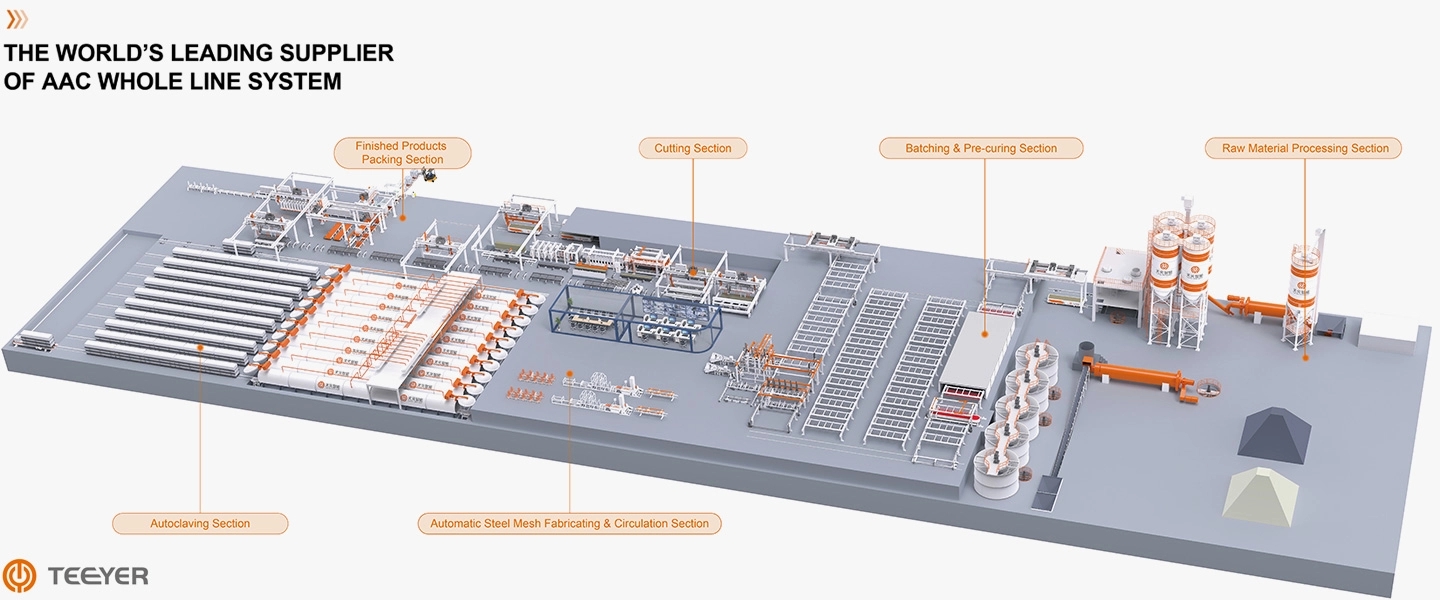
Every aac block plant needs the right materials to start. The main things used are sand or fly ash, cement, lime, gypsum, water, and a little aluminum powder. These materials must be very good quality. The plant keeps each material in its own bin or silo. This stops them from mixing by accident. Workers or machines measure each material very carefully. This makes sure the aac blocks are strong and dense.
The materials you pick change how good the autoclaved aerated concrete is. Sand or fly ash is the main part. Cement and lime help hold everything together. Gypsum controls how fast the mix sets. Aluminum powder makes tiny bubbles when it reacts with the other things. These bubbles make aac light and help it keep heat in or out. Water starts the chemical reactions and helps mix everything well.
Next, the aac block plant mixes and molds the materials. All the materials go into a big mixer. The mixer blends sand or fly ash, cement, lime, gypsum, water, and aluminum powder. The mix must be smooth and even. Mixing well is very important for good autoclaved aerated concrete.
Quality checks during mixing and molding include:
Use special tools to measure the raw materials for the right mix.
Mix everything well so all parts are spread out evenly.
Spread the aluminum powder evenly for good block quality.
Check and clean the molds often to stop block problems.
Test aac block samples for strength, density, and size.
Write down test results to find and fix problems early.
Many aac plants use machines to batch and mix the materials. These machines use smart programs to control the steps and lower mistakes. Hoppers weigh each material. Crushers, ball mills, and mixers help keep things moving smoothly. Conveyor belts carry the mixed stuff to the molds. This setup helps the plant work fast and without stopping.
After mixing, the plant pours the wet mix into molds. The mix grows bigger as the aluminum powder reacts and makes air pockets. The mix rises and fills the mold, making a big, soft cake. The plant lets the cake sit for a short time before the next step.
Autoclaved aerated concrete technology gives aac its special features. After molding, the plant cuts the soft cake into blocks or panels. Workers or machines use wire cutters to make the right shapes and sizes. The cut blocks go to the autoclave to cure.
The autoclave is a big tank that uses steam under high pressure. This step makes the aac blocks strong and tough. The usual autoclave settings are:
Parameter | Value/Range | Unit |
|---|---|---|
Designed Temperature | 204 | °C |
Maximum Operating Temp | 201 | °C |
Designed Pressure | 1.6 | MPa |
Maximum Operating Pressure | 1.5 | MPa |
Working Medium | Saturated Steam | N/A |
Design Pressure Range | 1.0 - 3.8 | MPa |
Design Temperature Range | 187 - 225 | °C |
The autoclave turns the soft, green blocks into hard, strong aac blocks. The steam and pressure cause chemical changes inside. These changes trap the air bubbles and make the blocks strong.
AAC block plants come in many sizes. Some are small and some are very big. Here are some common sizes:
Production Capacity (cubic meters/day) | Plant Scale | Machinery/Equipment Description |
|---|---|---|
Small scale | Basic AAC plant installation | |
Up to 150 | Small to Medium | Use of AAC Block Mould Lifter for mold removal |
Up to 750 | Large scale | Use of AAC Block Mould Tilting and Removal Machine |
Plants can be manual, semi-automatic, or fully automatic. Manual plants need workers to do most jobs by hand. Semi-automatic plants use machines for some steps, but people still do others. Fully automatic plants use machines for almost everything, from mixing to packing. Big aac block plants usually use fully automatic systems for faster work and better quality.
Note: Pick the right automation level for your aac block plant size, budget, and how much you want to make. Fully automatic systems are best for making lots of blocks quickly and with the same quality.
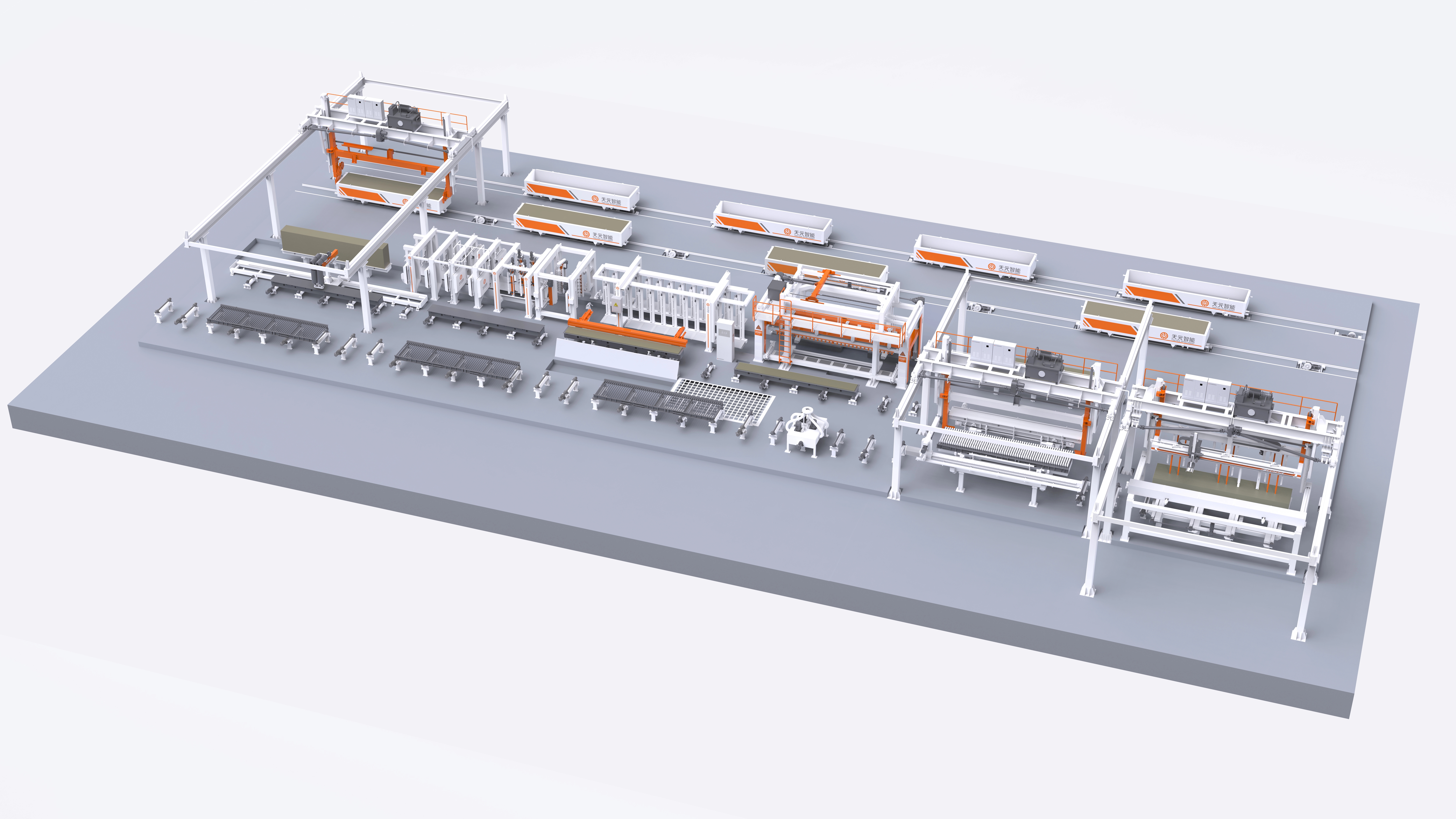
Cutting and curing are very important steps in making AAC blocks. After pre-curing, workers or machines take the green cake out of the mold. The next step is cutting the cake into blocks. The plant uses a wire cutting system with two parts. First, vertical wires cut the cake. Then, horizontal wires slice it into blocks of the right size. This careful cutting makes sure each block is the right size and smooth. Handling the blocks gently stops them from breaking and keeps waste low.
After cutting, the blocks go through curing. Workers put the cut blocks into an autoclave. The autoclave uses steam at about 180°C for 8 to 12 hours. This step makes the blocks strong and stable. The heat and time in the autoclave decide how good the blocks are. Good curing also stops the blocks from shrinking too much. When the plant cuts and cures well, the blocks are the right size, usually within ±5 mm. These blocks are strong, do not shrink much, and look neat. Builders like using them because they are easy and work well for many jobs.
Tip: Careful cutting and good curing help AAC plants make better blocks and throw away fewer bad ones.
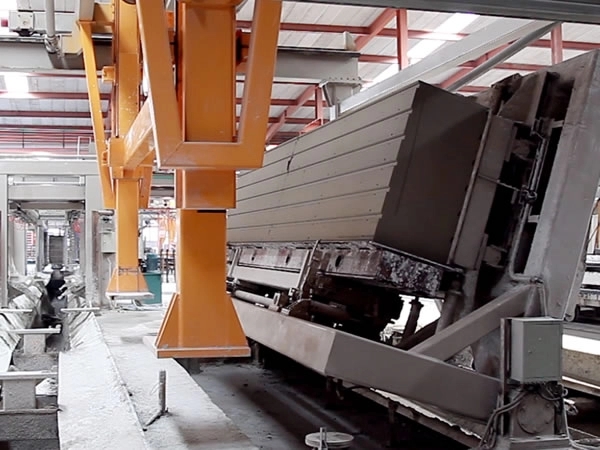
After curing, the AAC blocks are ready for the last steps. Workers or machines take the blocks out of the autoclave and let them cool down. The plant checks each block to make sure it is good quality. Blocks that do not pass the check are set aside to be recycled or used again.
Next, the finished blocks are stacked and packed. Big plants often use machines for this job. These machines use belts, robot arms, or forklifts to move blocks safely. Stacking the blocks the right way keeps them from breaking while waiting or moving. The plant wraps or ties the blocks to keep them together.
Good handling makes sure the blocks get to building sites in good shape. This helps builders start their work on time. Careful handling also helps the AAC plant keep a good name and make blocks without delays.
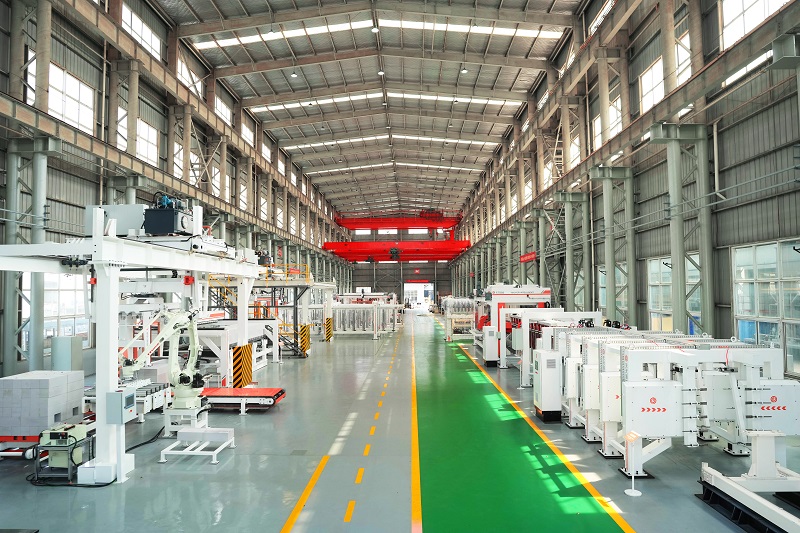
A modern AAC block plant uses special machines and systems. These help make strong autoclaved aerated concrete. Each part of the plant has a job. All the parts work together to turn raw materials into finished AAC blocks. Operators need to know how the main equipment and support systems work. This helps the plant run well.
AAC block plants use many important machines. Each machine does a different job in making autoclaved aerated concrete. The table below lists the main equipment and what each one does:
Equipment Type | |
|---|---|
Fully Automatic Batching System | Batching and mixing raw materials (siliceous and calcium materials) |
Mold Pouring Machine | Pouring the mixed slurry into molds |
Brick Pre-curing Room | Initial hardening of poured blocks before cutting |
Cutting Machines (Longitudinal and Transverse) | Cutting the pre-cured blocks into required sizes and shapes |
Steam Curing / Autoclaving Equipment | Curing the blocks under high-pressure steam to gain strength and durability |
Flip Demoulding Machine | Removing the blocks from molds without damage |
Product Packaging Machine | Packaging finished blocks for shipment |
Auxiliary Equipment | Palletizer, pallet feeder, cement silo, forklift, loader, stacker |
The batching and mixing system measures and mixes all the raw materials. This step makes sure the mix is right for strong autoclaved aerated concrete. Fully automatic batching systems help stop mistakes and make better AAC blocks.
Molding machines pour the mixed slurry into molds. The molds shape the AAC into big cakes. The brick pre-curing room lets the mix get hard before cutting. This step is important for making even AAC blocks.
Autoclaves use steam under high pressure to cure the AAC. This step makes autoclaved aerated concrete strong and tough. Operators must watch the temperature and pressure to get the best blocks.
Cutting machines cut the pre-cured cakes into blocks or panels. Both types of cutters work together for the right sizes. Good cutting systems help make less waste and keep AAC blocks the same.
Material handling equipment moves raw materials and finished blocks around the plant. Forklifts, loaders, and stackers help move AAC blocks safely. Automatic palletizers and feeders stack and sort blocks for shipping.
Supporting systems help the AAC block plant work well and save energy. Operators should pay attention to these important things:
Set up an energy management system using rules like ISO 50001. This means checking energy use, making goals, planning, and doing audits.
Use real-time energy checks on key machines to find high use and fix it.
Add energy-saving tools like high-efficiency machines, waste heat recovery, and smart controls.
Teach workers about energy use and give rewards for good habits.
Check and update energy management often. Use new technology and make production better.
Operators can have problems with autoclaved aerated concrete machines, like wear, control troubles, and old technology. Getting new equipment can help make more blocks and stop delays. Regular checks, cleaning, and training also help AAC plants work well and last longer.
AAC block plants need to control costs by picking good materials and keeping machines in good shape. Good planning and regular checks help machines last longer and keep autoclaved aerated concrete blocks high quality.
AAC block manufacturers are important in building. They give special machines and technology to make strong autoclaved aerated concrete blocks. Some brands are famous for their good work and skills. Here are some well-known names:
Ytong: This brand started AAC technology and gives trusted machines and plant setups.
Teeyer:Teeyer is a leading global provider of integrated solutions for autoclaved aerated concrete (AAC) production.

Hebel: Hebel makes new AAC systems and builders all over the world trust them.
H+H Group: H+H Group has many AAC products and plant machines.
AGICO: AGICO gives good AAC block plant machines and helps with technical support.
CNBM: CNBM is a big building material company and makes strong AAC production lines.
Maruti Hydraulics: This company makes AAC block plant solutions for India.
Force Engineering: Force Engineering gives modern AAC plant machines and helps with automation.
These AAC block manufacturers make machines that follow world rules. They care about quality, how long things last, and saving energy. Many brands do research to make plants work better and cost less. Their offices in many places help clients get support and spare parts easily.
AAC block manufacturers do more than sell machines. They give many services to help clients do well.Most suppliers build turnkey AAC plants. This means they plan, build, and set up the plant for you. Clients get a plant that is ready to use with little trouble.
Suppliers also give EPC services. This covers plant design, picking machines, and teaching workers. Many manufacturers change plant setups to fit what each client wants. Custom options include:
Changing how much the plant can make as the business grows
Picking block types and sizes, like standard, U-shaped, or special ones
Making it easy to grow the plant later without big changes
Adding smart controls and AI for better work
Using new control panels and IoT to watch and fix machines
Adding energy-saving tools to cut costs by up to 40%
Using different raw materials, like many sands or fly ash
Using strong materials, like stainless steel, for machines that last
Note: Custom options help clients keep up with new market needs and raw material changes.
AAC block manufacturers also help after the sale with service, spare parts, and advice. They help upgrade plants and teach workers. This support helps the plant run well and keeps the product good.
Picking the right AAC block plant supplier is very important. This choice can change how well a building project goes. Many things matter when picking a supplier. Each thing can change how good, fast, and useful the plant is.
A supplier with lots of experience is very helpful. These suppliers know the rules and help plants follow them. They help set up the plant and teach workers how to use it. Their teams give help with problems and send spare parts. They also help make plans to keep machines working longer. This help means the plant stops less and works better. They check block quality and help fix any problems.
Suppliers with lots of good work often have ISO certificates, patents, and happy customers. Their experience helps the plant work well and make good blocks every time.
New technology in AAC block plants helps make more blocks and better blocks. Machines that batch, mix, and cut by themselves make sure each block is made right. Better autoclaving makes blocks stronger and last longer. Automation can help the plant make up to 30% more blocks. Suppliers with smart systems help use less material and save money.
Good support after buying is very important for the plant. The best suppliers - Teeyer service team help set up the plant, teach workers, and give help when needed. They keep spare parts ready and can help fix problems from far away. Local teams can come fast if something breaks. Good support stops long waits and keeps the plant working all the time.

Cost is important, but it is not the only thing to think about. Buyers should look at what they get for the money, not just the price. A supplier who gives custom choices, good machines, and strong help can save money later. Custom choices, like different block sizes or curing ways, help meet what people want and waste less.
Tip: Always check what comes with the price—like setup, training, spare parts, and help—before you choose.
Other important things to think about are:
How much the plant uses machines and connects systems
If the plant follows world and country rules (EN 771-4, ASTM C1693, ISO 21870, IS 2185)
How well the plant controls materials and steps
If the plant can make enough blocks for your business
If you can change the plant for your local market
Before picking a supplier, buyers should ask some main questions:
How long has the supplier made AAC block plants?
What rules and certificates do their machines have?
How much of the plant is automatic?
Can the plant be changed for different block sizes or materials?
What help do they give after buying?
How fast can they send spare parts or fix things?
Do they teach workers and give technical help?
How many blocks can the plant make, and can it make more later?
Asking these questions helps buyers find the best supplier for them. The right supplier helps the AAC plant work well and make good blocks for a long time.
AAC block plants make materials for many kinds of buildings. These plants create products for homes, businesses, and factories. The table below shows how builders use AAC blocks in different projects and what benefits they get:
Project Type | Primary AAC Block Applications | Key Benefits |
|---|---|---|
Residential | Walls, floors, roofs | Thermal and sound insulation, energy efficiency |
Commercial | Partition walls, external walls, structural elements | Durability, cost efficiency, reduced construction time |
Industrial | Load-bearing and non-load-bearing walls | Strength, fire resistance |
Builders like AAC products because they are light and keep heat and sound in or out. In homes, AAC blocks help make houses quiet and comfortable. For business buildings, AAC blocks help build strong walls quickly. Factories use AAC blocks because they are strong and do not burn easily.
AAC block plants also help build in ways that are better for the planet. Using ready-made AAC blocks makes less waste and helps finish buildings faster. Some smart AAC blocks have sensors to help save energy and make repairs easier. Builders can pick special block sizes and blocks that store heat to meet green building rules. These features help AAC blocks earn green awards like LEED and BREEAM.
Tip: AAC blocks can help lower energy bills, make less waste, and help builders reach green goals.
The world market for AAC blocks is growing fast. Experts think more builders will use AAC blocks every year, about 6.2% more each year for five years. The market could be worth over $34 billion by 2031. Europe uses AAC blocks the most, but North America is growing faster because of new technology and more building projects.
Some big trends in the AAC block market are:
The blocks part of the market is biggest because builders want blocks that do not burn, block sound, and look nice. New ways to make blocks help this.
Most AAC blocks are used in homes because people want safe, green, and energy-saving materials.
Business buildings are using AAC blocks more because they need good insulation and fire safety.
Asia-Pacific is the top area for AAC blocks because cities are growing and many companies make AAC there.
North America is growing because of new machines and more big building jobs.
Government housing and new ways to build help more people use AAC blocks, like in India’s Life Mission Housing.
Companies work together to make more AAC blocks, like Bigbloc Construction and SCG International India.
Builders want materials that save energy and can be recycled. AAC blocks keep heat in or out, use less energy, and can be used again.
Cities are getting bigger, so more people need cheap, strong, and light building materials.
AAC blocks cost less to move and put in place because they are light.
New building rules want materials that keep heat in and do not burn, which AAC blocks do well.
Ready-made and modular buildings use AAC blocks to save time and make less waste.
More schools, hospitals, and public buildings use AAC blocks for safety and quiet rooms.
New AAC blocks are made to be stronger, keep heat in or out better, and use recycled stuff.
More machines and bigger plants help make more AAC blocks and lower prices.
AAC block plants are important for new buildings. Their products help builders follow rules for safety, saving energy, and being green. As more builders want green materials, AAC blocks will stay a popular choice.
An aac block plant makes aac blocks with special technology. Operators need to know each step to make strong blocks. Good machines and support systems help keep the blocks high quality. Top companies give different solutions for many needs. When picking a supplier, buyers should look at experience, technology, and support. Making smart choices helps aac blocks work better and last longer in building projects.
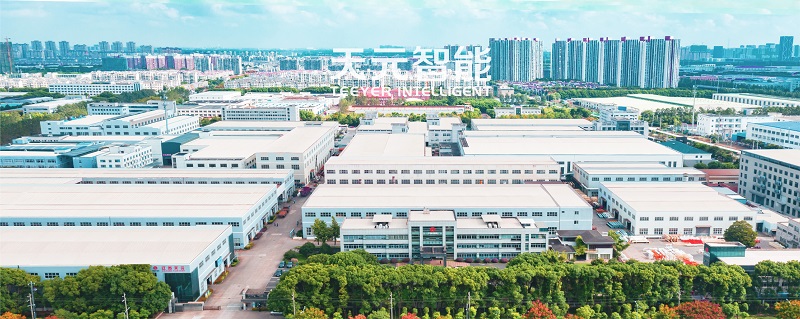
An AAC block plant makes autoclaved aerated concrete blocks. These blocks are light, strong, and save energy. Builders use them for walls, floors, and roofs in many buildings.
Most AAC block plants need 6 to 12 months to set up. The time depends on plant size, how automatic it is, and help from the supplier. Good planning and expert help can make setup faster.
AAC blocks often last more than 50 years. They do not burn, rot, or get damaged by bugs or water. This makes them a good choice for buildings that need to last a long time.
Yes, AAC block plants use less energy and make less waste than old brick plants. Many plants reuse things like fly ash. This helps lower harm to the environment from building.
Workers must clean machines, check tools, and change old parts often. Doing regular checks stops problems and keeps the plant working well. Training workers helps the plant run better.
Most AAC block plants can make blocks in many sizes and shapes. Suppliers give special molds and cutting tools. This helps builders get blocks that fit their projects.
Starting an AAC block plant costs from $300,000 to a few million dollars. The price depends on how big the plant is, how automatic it is, and where it is built. Buyers should look at different suppliers and think about saving money with better machines.
AAC blocks keep heat in or out, make buildings lighter, and help build faster. They do not burn and bugs do not harm them. Builders pick AAC blocks to save energy and make buildings safer.